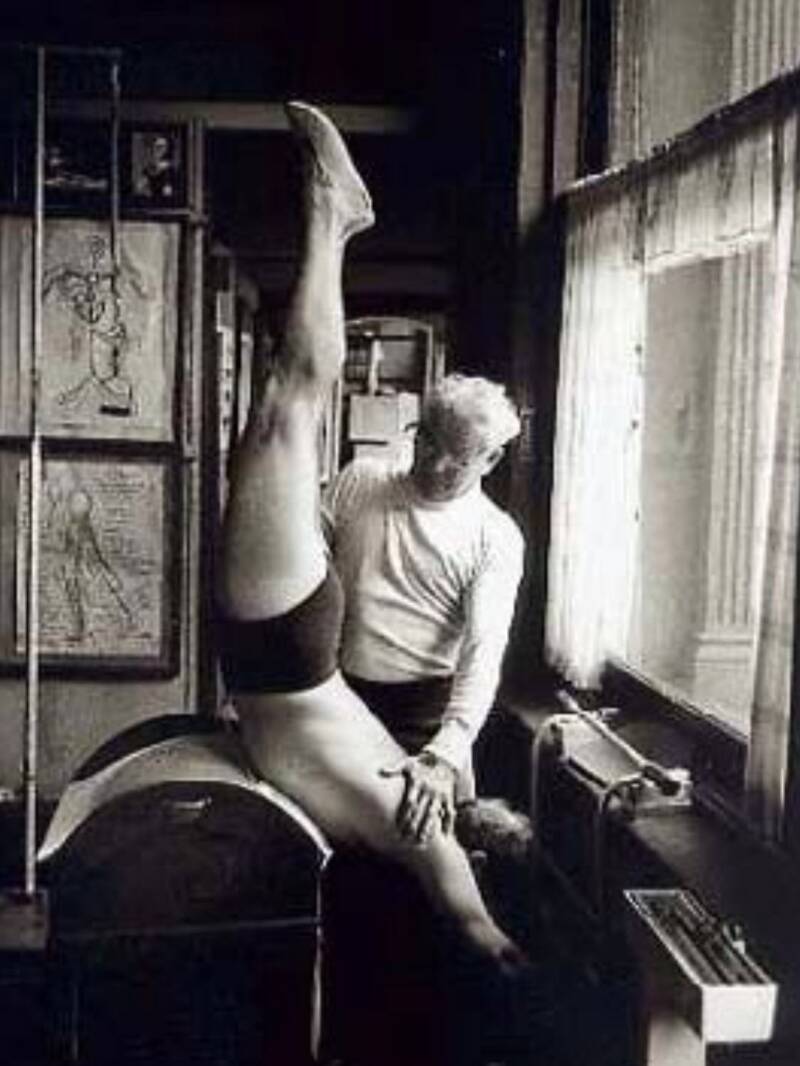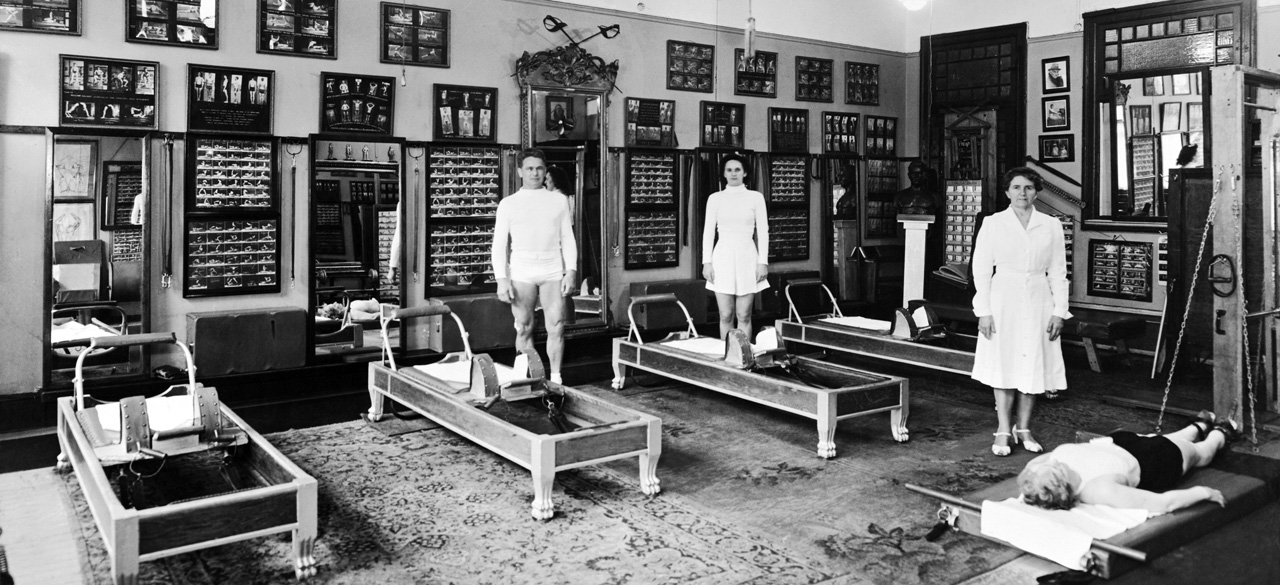THE CLASSICAL METHOD
The Classical Pilates Method (originally called Contrology) is generally defined as Joseph Pilates’ original exercises, method and philosophy. This method was then passed down to the 1st generation teachers such as Romana Kryzanowska, Jay Grimes and others.
As “Pilates” increased in popularity, it has been confused with core work, stability work, physiotherapy and other “Pilates based” exercises. It has been adapted to suit the intention of any given body worker wanting to cash in on the success of the name Joseph Pilates.
The sad fact is that if Joseph Pilates walked into many studios today he would not know what he was looking at. A landmark court case in 2001 in the United States resulted in the Pilates name being deemed generic, meaning that it became possible for anyone to say that they were a Pilates teacher.
Pilates is ideally taught in private lessons, or in classes with very small groups (maximum 4 participants). The instructors teach by verbal cues and instruction only, never by doing the class with the students.
The Classical Pilates Method holds to 6 guiding principles:
Concentration
‘Concentration’ is the most important principle that the method relies on. You must concentrate fully on what you are doing to do any movement properly.
“It is the mind itself which builds the body.” – Joseph Pilates
Control
Anyone can ‘throw’ their body into a position. We use several techniques to do this including force, momentum, poor muscle recruitment and mechanical assistance such machines. None of these methods are ultimately good for your body. When moving from one position into another or performing an exercise, it must be done with control and correct muscle recruitment. You must move into a position because you are controlling the movement, not that the movement is controlling you.
Centering
In the Pilates Method we refer to the ‘Core’ as the ‘Centre’. Joseph referred to it as the “Powerhouse”. It is the band of muscles around the body that encompasses the lower back, abdominals, pelvic floor muscles, hips and upper inner thighs. Strengthening the “Powerhouse” creates a strong platform for the rest of your body.
Precision
If you don’t do the movement or exercise correctly it loses its value. Movements must be precise, hot haphazard. The only way to get a specific result is to move specific muscles and body parts in specific ways.
Flowing Movement
Pilates movement should be flowing, not disjointed or jerky. Flowing Movement comes from Concentration and Control.
“There should be a flowing motion outwards from a strong centre” – Romana Kryzanowska
Breathing
Joseph Pilates described correct breathing as “the foundation”. You must completely inhale and exhale. In fact, Breathing was one of his original Guiding Principles. In his book ‘Return To Life Through Contrology’ (1945), Joseph outlines the Mat exercises. In every exercise, the breathing component is emphasised.
“Even if you follow no other instruction, learn how to breathe correctly”.
Joseph Pilates
Teachers must complete a rigorous training program consisting of at least 600 hours of class work, observation and personal practice to become Comprehensively Certified. Continuing education is required to maintain certification.


GET IN TOUCH
p. 03 9533 4831
m. 0412 646 773
info@thepilatescompany.com.au
489a Hampton Street
Hampton VIC 3188

 Alex King
Alex King Naomi Walters
Naomi Walters